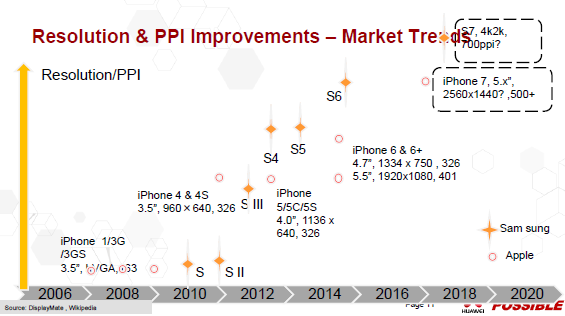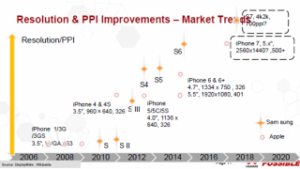Gang Xu is from Huawei’s Consumer Business Group and he talked about consumer experiences for mobile devices.
There are a lot of trends in image quality and form factor innovation, but with limits imposed by power consumption issues. The display also has to work in a wide variety of conditions, especially in developing regions such as India and Africa.
Mobile phones need to be used outdoors and brightness has to be high, while watches can be oriented by the user to the optimum viewing angle even in high brightness.
Looking at form factors, the iPhone 6+ is too big to be used with one hand, so the optimum size for a phone is probably 5″. How you hold it affects touch (because of palm rejection) and that is a challenge. The size is also affected by your target market – for example, men or women?
Borders matter on the sides and also the top and bottom. Huawei will have a new watch with high resolution and a thin border, especially compared to the LG G Watch R.
Turning to resolution, there has been a boost to resolutions at above 300ppi. Looking to the future, resolutions may go up to 700 ppi or above for the Samsung S7.
Going to UltraHD at 600/700 ppi forces the diagonal to 6″ and 7″, but then the phone is too big. However, probably, panels at even higher resolutions will be sold because consumers understand and may buy performance that they can’t even see.
Colour saturation is increasing, but it’s not clear what the standards will be and that will be an important factor for the development of WCG. Better colour gives apparently better contrast, so consumers like it. However, if you take standard content on WCG displays, it can make things look quite unnatural.
Turning to power consumption, OLED is better on some content than on others. At high pixel density, OLED gets more advantage, so that may help AMOLED to expand.

